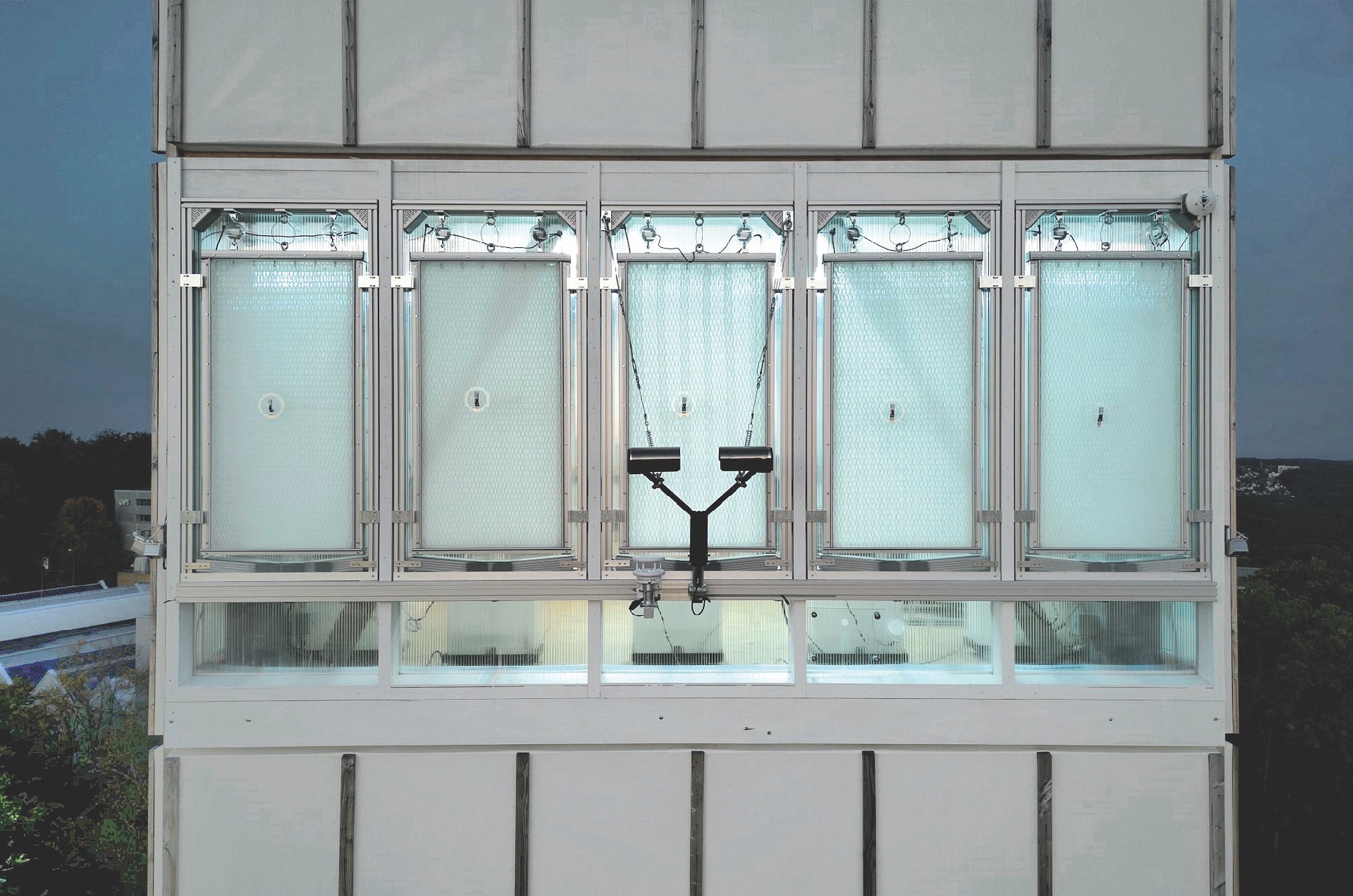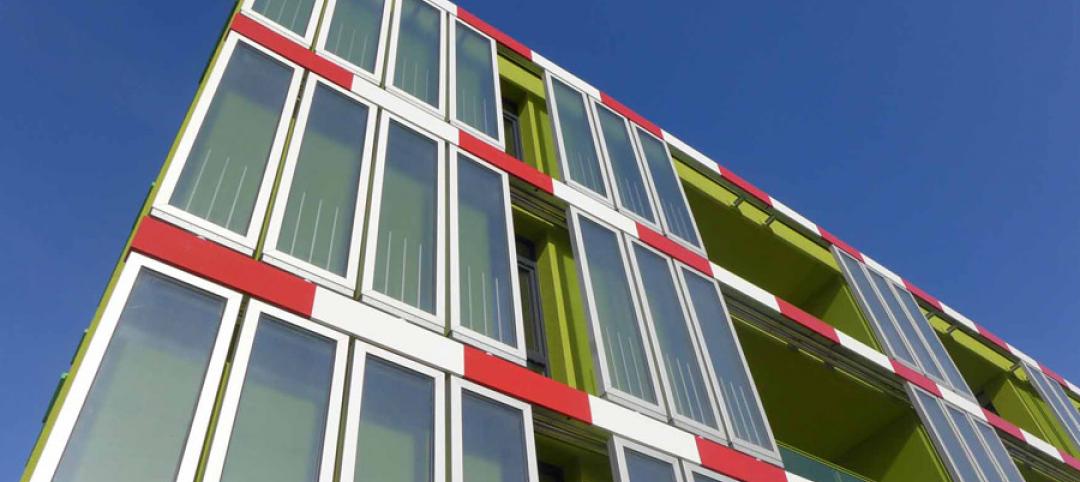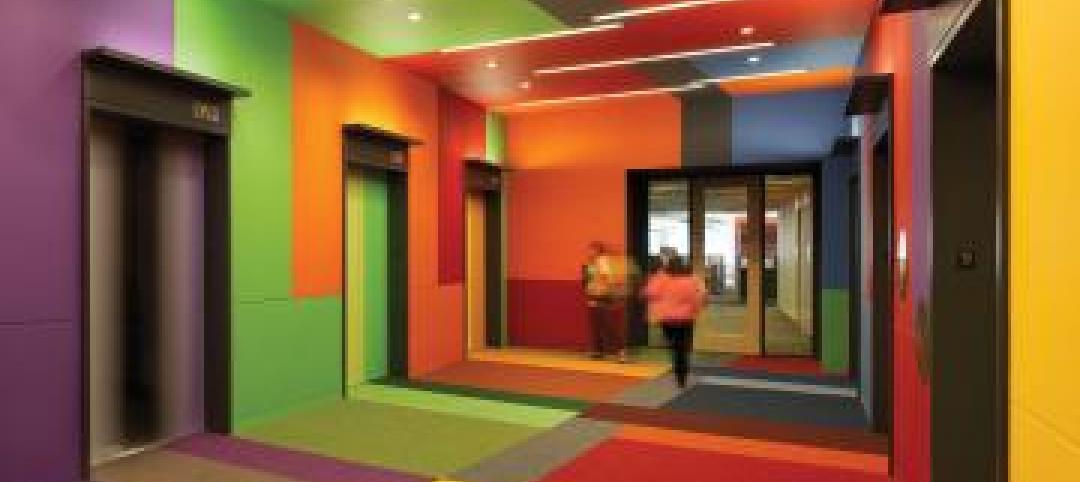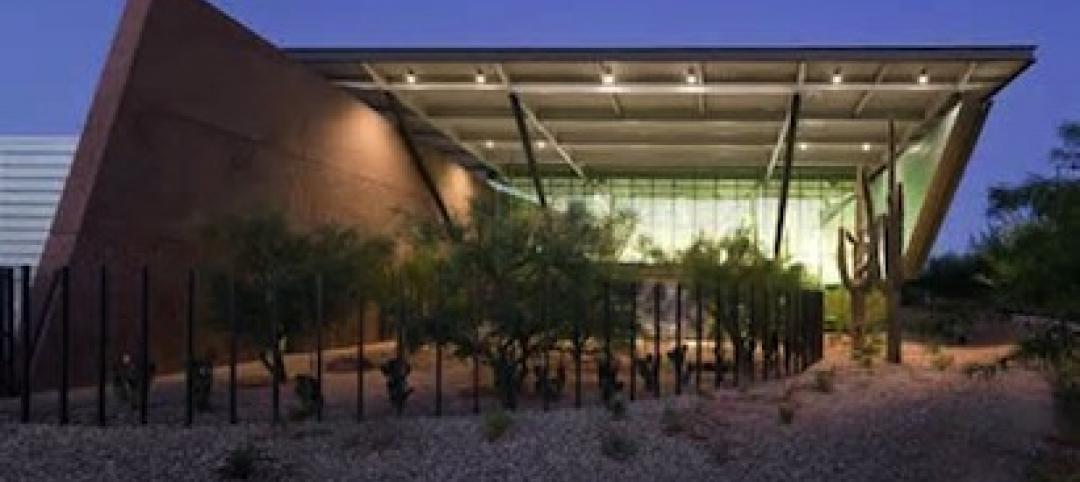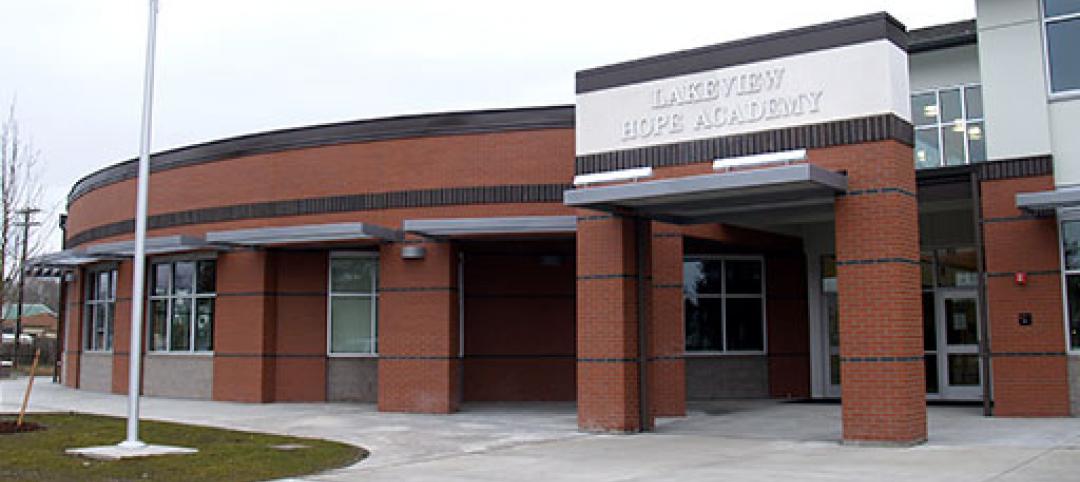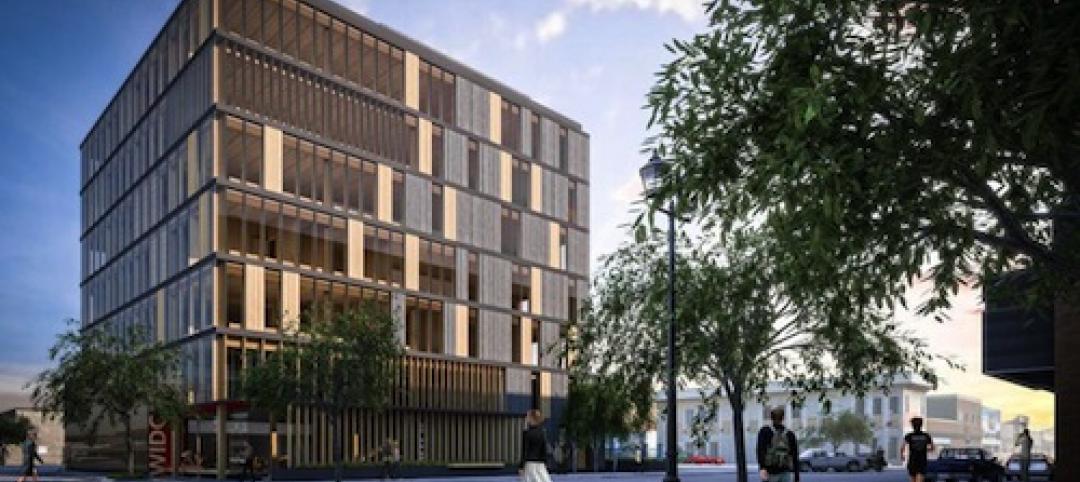Global urbanization and densification are giving rise to new thinking about how design can lower the impact of buildings on the heating of the planet. This is particularly true of high-rise buildings with glass façades that get scalding hot and generate heat islands. On buildings and other sealed surfaces, only about 10% of any rainwater that hits them evaporates; the rest of that precipitation typically ends up running into sewer systems in volumes that increasingly are leading to flooding.
One design and engineering solution to these problems is being explored at the University of Stuttgart in Germany, where researchers last October presented what they claim is the first hydroactive façade that moderates the temperature of exterior walls and interiors of buildings by absorbing rainwater that the system releases on hot days for evaporative cooling.
“It’s a milestone in the adaptation of the built environment to the urgent challenges of our time,” proclaims Christina Eisenbarth, a Research Assistant at the university’s Institute of Lightweight Structures and Conceptual Design (ILEK), and the façade’s inventor.
Dubbed HydroSKIN, the façade consists of an external, multilayered 3D textile that acts as a water collector and evaporator. Here’s how it works, according to research abstracts that ILEK released last fall:
- Its first layer is a water-permeable mesh or knitted fabric facing the outside that lets water in and filters out impurities and insects.
- A second inner layer is a water-transporting spacer fabric whose pile threads mobilize incoming and outgoing water and provide an open porous structure with a large surface area for air circulation and facilitating evaporation.
- A third layer can be integrated into the system to optimize water storage and evaporation performance. A water-bearing fourth layer, which might be a foil, is on the inside and provides water drainage and collection.
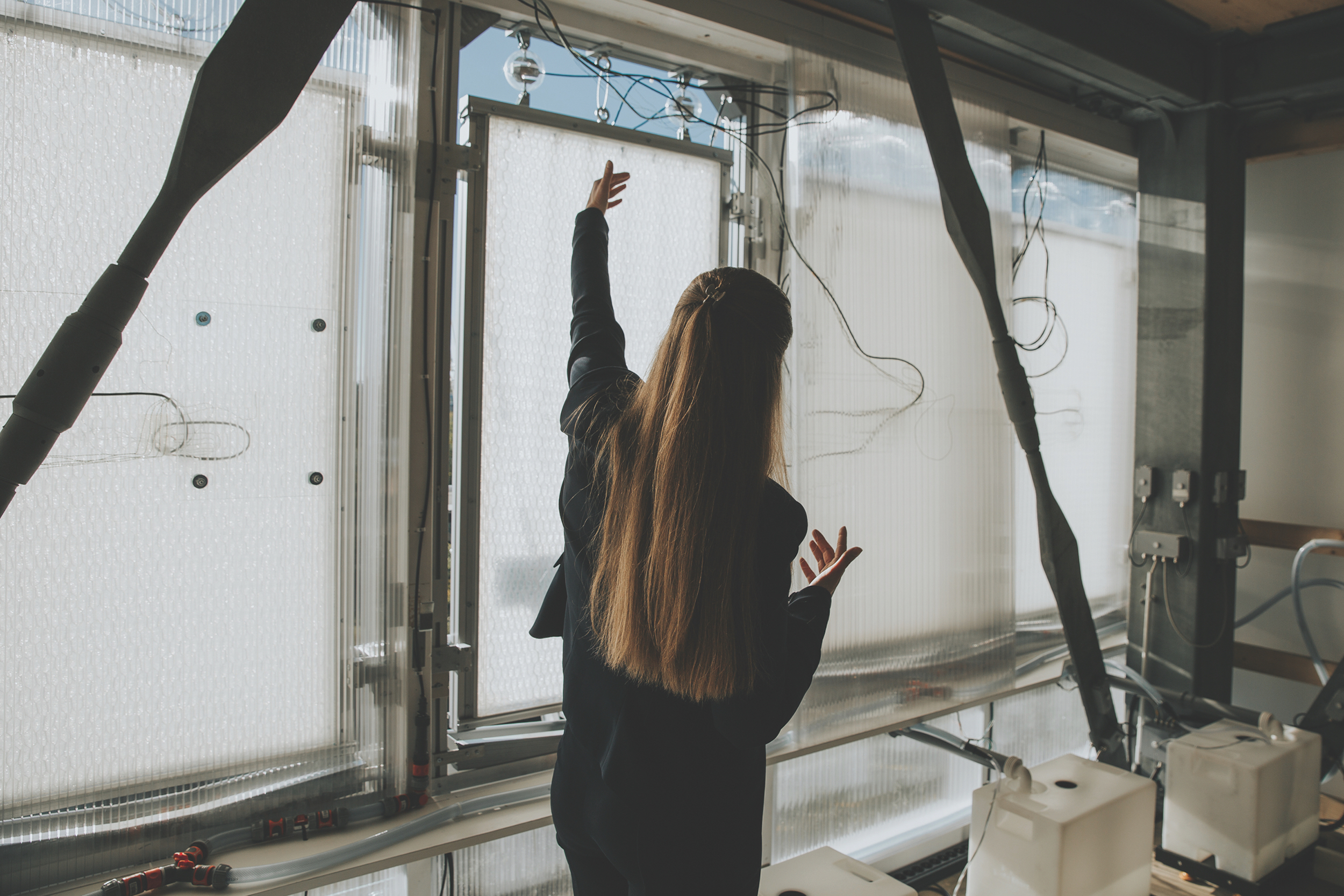
The layers are assembled by a force fit and are fixed into a frame profile by means of a waterproof Keder fabric.
The thickness of the textile- and film-based envelope system can vary between 20 and 60 mm, depending on environmental conditions and performance requirements. Depending on wind-driven rain yields, the depth of the frame profile’s water supply and discharge conduits might range from 50 to 100 mm.
HydroSKIN is well suited for high-rise buildings
Researchers have tested their concept in the lab and on buildings in Stuttgart and Singapore. At press time Eisenbarth was in Australia preparing to test HydroSKIN on buildings in Sydney.
The findings so far support the efficiency of the façade and its potential for high-rise buildings. For example, research found that above building heights of 29 meters, the total square-meter-related wind-driven-rain (WDR) yields striking a façade surface exceeded vertically falling precipitation yields per square meter. In other words, more rain can be absorbed by the façade than by a roof surface of the same size, and this disparity becomes even more pronounced at higher elevations.
In lab tests, researchers demonstrated a temperature reduction of about 10 degrees due to the effects of evaporation via HydroSKIN. Initial measurements last September on the world’s first adaptive high-rise building, at the University of Stuttgart’s Vaihingen campus, “suggest the cooling potential is even significantly higher,” says Eisenbarth.
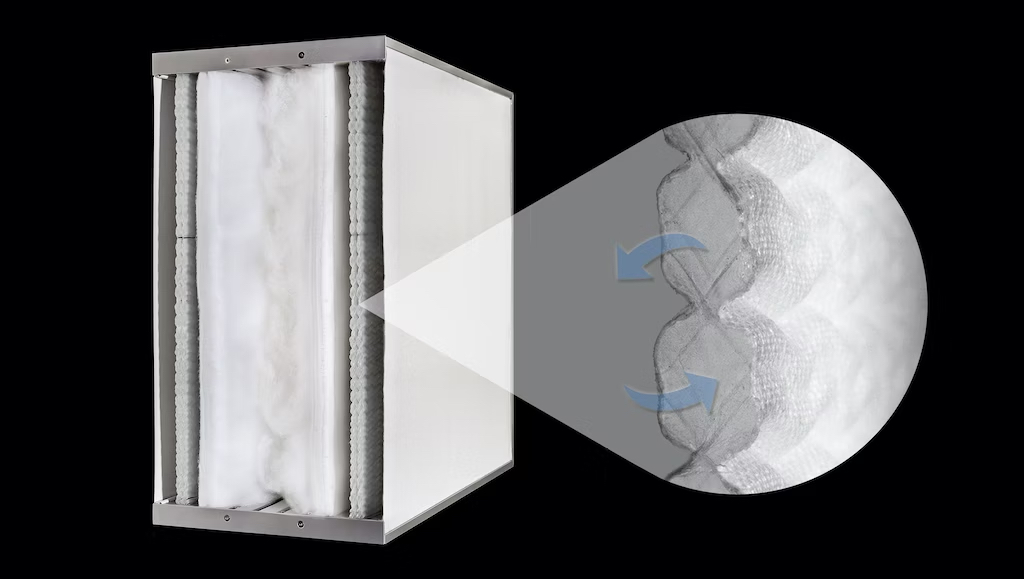
Last year, a prototype installation and meteorological evaluation of five different HydroSKIN prototypes was conducted on the 10th level of this 12-floor, 36.5-meter campus high-rise. In 2023, there will be further testing of HydroSKIN on the building’s 9th level in combination with a unitized glass façade that will integrate textile insulation and other functional layers into the system.
BD+C was unable to ascertain how close HydroSKIN is to becoming commercially viable. (The results from the testing in Australia should be ready sometime this summer, says Dr. Walter Haase, ILEK’s Managing Director and Head of Working Groups.) But it is ILEK’s contention that this system could be retrofitted onto any façade surface of new or existing buildings.

For one thing, its mass—between one kilogram per square meter dry to five kg/sm saturated—compares favorably to other façade infill materials such as cellular concrete (~150 kg/sm), wood-panel construction (~125 kg/sm), thermal insulation composite systems (~63 kg/sm), or even triple glazing (~45 kg/sm). In addition, HydroSKIN is designed to be aesthetically unobtrusive, and its layers are framed in a profile that allows for easy disassembly and recycling of all components.
While HydroSKIN’s long-term suitability has yet to be proven, ILEK has manufacturers lined up to make it, says Eisenbarth.
Related Stories
| Sep 19, 2013
6 emerging energy-management glazing technologies
Phase-change materials, electrochromic glass, and building-integrated PVs are among the breakthrough glazing technologies that are taking energy performance to a new level.
| Sep 13, 2013
Video: Arup offers tour of world's first algae-powered building
Dubbed BIQ house, the building features a bright green façade consisting of hollow glass panels filled with algae and water.
| Sep 9, 2013
Top 25 continuing education courses on BDCuniversity
An overview of the 25 most popular continuing education courses on BDCuniversity.com.
Sponsored | | Aug 29, 2013
Nichiha USA panels selected for unique mixed-use project in Cambridge, Mass.
Peter Quinn Architects specifies Nichiha’s Illumination Series Panels for a progressive look for a work/live/play development in the heart of the Harvard community.
| Aug 22, 2013
Energy-efficient glazing technology [AIA Course]
This course discuses the latest technological advances in glazing, which make possible ever more efficient enclosures with ever greater glazed area.
| Jul 1, 2013
Firestone Building Products Company LLC Announces Sustainability Report
Firestone Building Products Company, LLC, the leading manufacturer of superior “Roots to Rooftops” products for commercial building performance solutions, today announced the release of its 2012 Sustainability Report. The report, the first for Firestone Building Products Company, covers the fiscal 2012 year and is available for download at firestonebpco.com.
| Jun 28, 2013
Calculating the ROI of building enclosure commissioning
A researcher at Lawrence Berkeley National Laboratory calls building enclosure commissioning “the single-most cost-effective strategy for reducing energy, costs, and greenhouse gas emissions in buildings today.”
| May 14, 2013
Easy net-zero energy buildings [infographic]
"Be a Zero Hero" infographic educates building industry professionals on ultra energy-efficient structural insulated panel construction
| Apr 30, 2013
First look: North America's tallest wooden building
The Wood Innovation Design Center (WIDC), Prince George, British Columbia, will exhibit wood as a sustainable building material widely availablearound the globe, and aims to improve the local lumber economy while standing as a testament to new construction possibilities.
| Apr 16, 2013
5 projects that profited from insulated metal panels
From an orchid-shaped visitor center to California’s largest public works project, each of these projects benefited from IMP technology.


